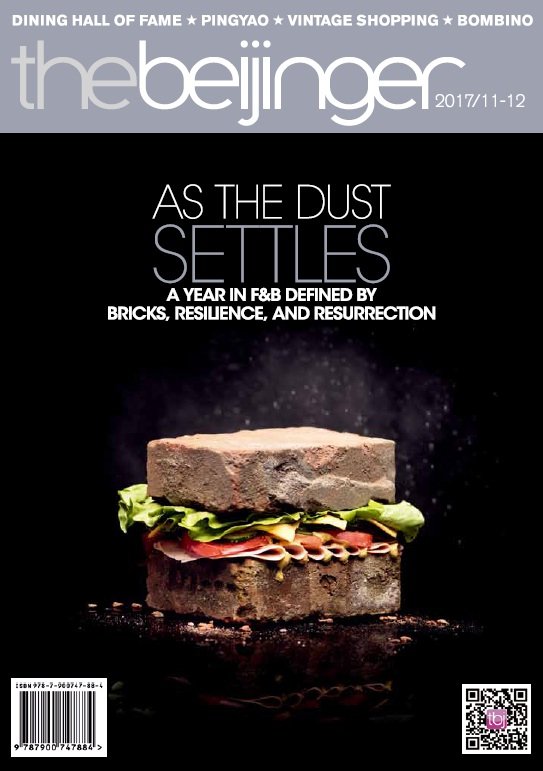In With the Old: The Hunt for Vintage in Beijing’s Hutongs
It should hardly come as a surprise that finding a genuinely old object is a serious mission in Beijing. And we’re not even talking about antiques, but 30- to 40-year-old knickknacks that aren’t simply shabby-chic looking things (just stroll through Nanluogu Xiang or the other “fixed-up” hutongs). Sadly for those “there’s-beauty-in-the-old” types, it seems like the general Chinese public is not yet a fan of fixer-uppers, in part perhaps due to the inauspiciousness of owning secondhand clothes. Nevertheless, it is indeed possible to organize a weekend walk around the hutongs dedicated to vintage shopping.
Pro tip: If you are looking for an authentic secondhand (二手, ershou) piece, always ask the shop personnel to make sure your eyes aren’t fooling you.

Base Vintage
Best for: Men’s clothes
It might not be the most suitable-for-all vintage store, but boy is it cute. While their Gulou Dongdajie neighbors have their skirts and ties arranged by colors and patterns, Base Vintage is extremely cluttered, slightly messy, and damp. Disclaimer: You might need to go in alone and walk sideways – just how real vintage shopping should be! This tiny two-story shop uses every possible centimeter of space and certifies its authenticity with the unmistakably musty smell when you first walk in. Besides racks of leather jackets and coats, you can also find a solid collection of backpacks and some vintage designer labels. Bags mostly come from Europe while other clothes are usually imported from Japan. Prices are slightly lower than high-street vintage brands and hover around RMB 300-400 with designer bags starting from RMB 700-800.
Daily 5-10pm. 11 Dajingchang Hutong, Dongcheng District
东城区大经厂胡同11号

Beixinqiao Secondhand and Antiques
Best for: Vintage bicycles
Retro-style Flying Pigeon (Fēigē) and the fancier Phoenix (Fènghuáng) bikes have long been staples among older hutong residents, since catching on between their younger, hipper brethren. While both varieties are attainable on Taobao, they can also be picked up right by Beixinqiao Subway (Exit D), between the convenience store and the bakery. The dusty gray store stocks antique vases and furniture on the left side and bikes and wheelchairs on the right. Phoenix bikes start at RMB 500, or try your luck with imported Japanese (RMB 1,500) or Raleigh (RMB 2,000-plus) gems. Built to outlast the owner, secondhand Phoenix bicycles might need some TLC, but once they’re born again, they’re sure to fly.
Daily 9am-5pm. 43 Dongsi Beidajie, Dongcheng District
东城区东四北大街43号

Me Too Vintage
Best for: Discount rack
This suspiciously clean and odorless store may first strike you as an ersatz secondhand haunt. However, upon closer inspection, washed out labels and greenish earrings confirm the shop keeper’s words – it’s all used. Lighter clothes in the store go for around RMB 300-400 and coats for up to RMB 900. However, the best finds are on the rack of discounted coats and jackets, affording warmth for RMB 300-500.
Daily 4-9pm. 42 Gulou Dongdajie, Dongcheng District
东城区鼓楼东大街42号

Spring Cameras
Best for: Cameras, duh
Spring Cameras is the hands-down winner when it comes to buying film and digital cameras in the hutongs. Their small but organized store asserts its spot as a go-to for any camera-related matters, from developing film to filling out your vintage collection. With an occasional family member lounging on the sofa in the back of the room or a young couple curiously inspecting cameras they’ve picked out, it lures you in with a casual and friendly vibe. Cameras on display range from newer point-and-shoot Minoltas and Nikons from the ‘90s to Chinese Pearl River (珠江 Zhūjiāng) or Zenit oldies from ‘70s and ‘80s, including a whole shelf full of lenses, not to mention the wall of neatly lined-up Polaroids that make for a great historical timeline. Film goes for RMB 16-50 a roll and cameras start from a little over RMB 300, going up to RMB 800-1,000 for the best finds.
Noon-9pm (closed Mon). 52 Cheniandian Hutong, Dongcheng District
东城区车辇店胡同52号
This article first appeared in the Nov/Dec 2017 issue of the Beijinger.
Read the issue via Issuu online here, or access it as a PDF here.
More by this author here.
Photos: Tautvile Daugelaite








